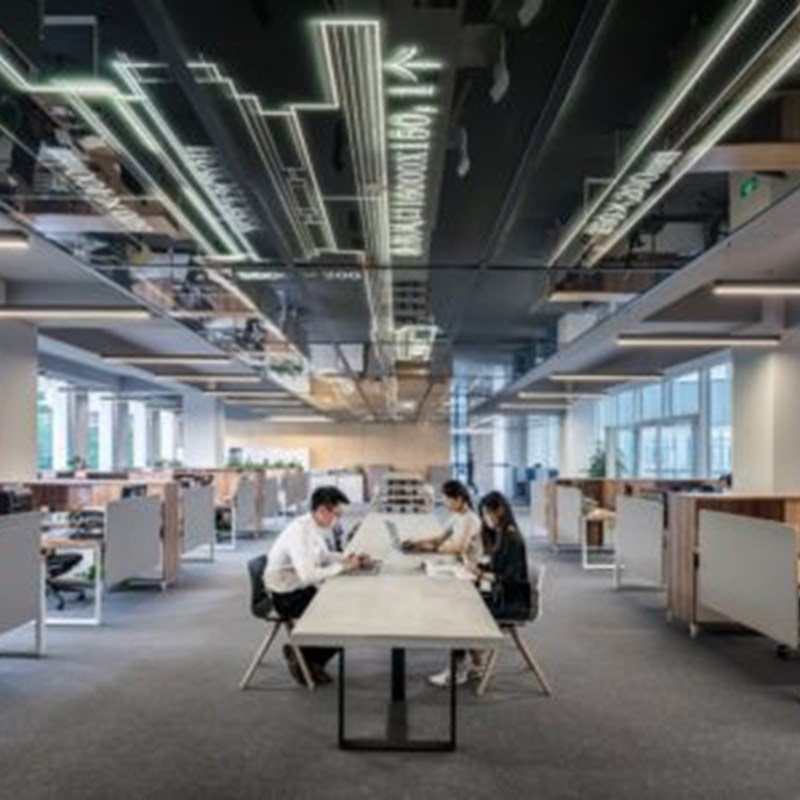
What is a Smart Space?
A Smart Space is a physical environment equipped with connected sensors and monitors that use IoT-powered technology to optimise energy efficiency, improve productivity levels for businesses and public services, and enable simpler and more meaningful human interactions with our environments and each other.
A Smart Space can be a working environment such as an office or shared workspace. It could be an apartment block or hotel complex. It could be a hospital, shopping centre, airport or train station. And as built environments begin to connect to each other and to outside Smart Spaces to create healthier, cleaner, and more convenient Smart Cities, smart technology will have an impact on every part of our lives.
Smart Spaces and Smart Cities will revolutionise the way we interact with each other and our surroundings both at work and in our daily lives. At this week’s CES 2019 Show in Las Vegas, Smart Spaces are a hot topic already, with buzz around the future of Smart Homes and Smart Offices attracting a lot of attention.
Smart Environment
One of the biggest advantages of connecting built environments to the Internet of Things and harnessing the data on how an environment works for its users comes from the capacity to improve energy efficiency levels and therefore reduce carbon emissions and energy usage.
Green Smart Space technologies include:
According to a report by Siemens Financial Services, Smart Buildings as a Service ‘could save 15-25% on energy costs, and with non-domestic buildings accounting for 10-15% of carbon emissions, enabling them to reduce their energy consumption could make urban environments healthier and more attractive.’
Smart Working Spaces
With workers seeking out more flexible working models and employers being more motivated than ever before to provide healthy and comfortable work spaces to ensure the very best productivity from their staff, Smart Working Spaces are set to become an integral part of our lives.
Our work spaces will become more reactive to our personal preferences, with office and individual desk lighting, heating and ventilation tailored to offer comfort and accessibility to office-based staff. IoT-connected offices are safer spaces in terms of data security and privacy, access control and malware detection.
Smart meeting rooms and space management solutions optimise office space usage, whilst cloud technology and connected shared work spaces offer a more flexible working model, moving away from the traditional office-based 9-5 model.
Smart Charging technology takes away the challenge of maintaining sufficient battery levels of laptops and phones when we’re out of the office, and mobile connectivity will enable us to truly work anywhere and everywhere.
Smart Homes
Smart Spaces don’t need to be large or even shared spaces. Homes can also be optimised through the Internet of Things, and Smart Home technology is already making life easier and more efficient for millions of households around the globe. Smart Homes fitted with connected technology and AI-enabled software allow us to control our heating, lighting and security remotely via smartphone apps, order groceries when our fridge is running low, and keep an eye on our pets when we’re at work.
Installing sensors that monitor appliance usage can have the double benefit of enabling households to track energy consumption and offering reassurance in terms of appliance safety and function. A connected sensor installed in a kettle or armchair could also provide peace of mind for people living independently at home for longer in later life – with alerts set up to go to family members if somebody doesn’t make their morning cup of tea, for example.
Smart Spaces connect to one other to create Smart Cities, with Smart Parking, ANPR, connected CCTV, Smart Street Lighting, Smart Retail Spaces and much more all working together to create a connected environment for us to interact with and use to live cleaner, healthier, safer, more efficient lives. The Arkessa blog series – Smart Spaces of the future – will give you an in-depth view of the kinds of technologies being used right now and in development.
Subscribe to the Arkessa newsletter below to receive the latest blogs and news straight to your inbox.